Lucky Bamboo/span>
Lucky bamboo, scientifically known as Dracaena sanderiana, is a popular houseplant that is believed to bring good luck and positive energy according to Feng Shui. In this comprehensive guide, we will explore the fascinating world of lucky bamboo, including its origins, care requirements, various shapes and arrangements, and the symbolism associated with different stalk numbers. By the end of this guide, you will have a comprehensive understanding of lucky bamboo and be equipped with the knowledge to grow and enjoy this auspicious plant.
Origins and Symbolism:
Contrary to its name, lucky bamboo is not actually bamboo but belongs to the Dracaena genus. It is native to tropical rainforests in parts of Africa and Southeast Asia. In Chinese culture, lucky bamboo is considered a symbol of good fortune, prosperity, and positive energy.
Plant Anatomy:
Lucky bamboo consists of tall, slender stalks with small, leafy branches at the top. The stalks can vary in height and thickness, and they often grow in a twisted or spiral pattern, giving them a unique and elegant appearance.
Light and Temperature Requirements:
Lucky bamboo thrives in bright, indirect light. It is important to avoid exposing the plant to direct sunlight as it can scorch the leaves. Maintain a temperature range between 65°F and 90°F (18°C to 32°C) for optimal growth.
Watering and Humidity:
Lucky bamboo is typically grown in water or soil. If grown in water, ensure that the roots are submerged in about an inch of water and change the water every two weeks. If grown in soil, water the plant when the top inch of soil feels dry. Maintain moderate humidity levels by misting the leaves regularly.
Fertilization:
Fertilize lucky bamboo sparingly with a balanced liquid fertilizer formulated for houseplants. Apply the fertilizer once a month during the growing season, following the instructions on the package.
Shaping and Arrangement:
Lucky bamboo can be shaped and trained into various forms, including straight, curly, or braided stalks. These shapes can be achieved by using wire or by carefully tying the stalks together. Additionally, lucky bamboo is often arranged in decorative containers or combined with other plants to create visually appealing displays.
Number of Stalks and Symbolism:
The number of lucky bamboo stalks in an arrangement carries symbolic significance. For example, three stalks represent happiness, wealth, and longevity, while five stalks symbolize health, creativity, and academic success. The meanings associated with different numbers can vary based on cultural beliefs and personal preferences.
Maintenance and Pruning:
Regular maintenance is essential to keep lucky bamboo healthy and looking its best. Remove any yellow or brown leaves promptly, and trim overgrown stalks or branches as needed. Pruning can help maintain the desired shape and size of the plant.
Propagation:
Lucky bamboo can be propagated by taking stem cuttings. Simply cut a healthy stalk below a node and place it in water or well-draining soil. Provide appropriate care, and the cutting will develop roots and grow into a new plant.
Good Luck and Feng Shui:
Lucky bamboo is often placed in homes and offices to invite positive energy and good fortune. It is believed to bring luck, prosperity, and harmony to the space it occupies. Consider the placement and arrangement of lucky bamboo based on Feng Shui principles to maximize its positive effects.
Lucky bamboo is not only a beautiful and elegant houseplant but also a symbol of good luck and positive energy. By following the comprehensive information shared in this guide, you are well-prepared to care for and enjoy the benefits of lucky bamboo. May this ausp
icious plant bring you joy, prosperity, and abundant blessings.
Things to know about ANTHURIUM
Common (vernacular) Name
एन्थूरियम (Hindi), Anthurium, Flamingo Lily, Flamingo Flower, Painter's Palette, Lace Leaf, Pigtail Plants, Tail Flower and many more.
Botanical Name
Anthurium Andraeanum
Origin
Mexico to Tropical America (Colombia, Ecuador).
Family
Araceae
Plant Type
Tropical plant
Plant Features
Ornamental / Evergreen / Exotic
Life Cycle
Perennial
Landscape Uses
Container Planting and Houseplants.
Species
Belolonchium, Calomystrium, Cardiolonchium, Chamaerepium, Cordatopunctatum, Dactylophyllium, Decurrentia, Digitinervium, Gymnopodium, Leptanthurium, Pachyneurium, Polyphyllium, Polyneurium, Porphyrochitonium, Schizoplacium, Semaeophyllium, Tetraspermium, Urospadix, Xialophyllium.
Varieties
It comes with thousand of different varieties in a diversity of leaf and flower colorations.
Size
Height : 1 to 1.5 feet tall and Width : 1 feet wide when mature.
Indoors or Outdoors
Outdoors : Anthurium can be used outdoors in shady plantings, avoid direct sun light.
Indoors : Excellent plant grow in bright light or indirect light. Best indoor plants for beginners.
Blooming / Flowering
Blooming period is throughout the year.
Flower Colour
It’s come with a contrasting spadix Gold, Yellow, Orange, Pink, White, Green, Purple, Red, Burgundy, Multicolored and Variegated colours.
Lucky Plant
According to Feng Shui, It bring Good Luck in your relationships.
Lighting / Sun Exposure
Bright Indirect Sunlight.
Temperature
Grow best preferably warm temperature above 21°C and can be tolerate max temp. as high as 32°C.
Growth Rate
Anthurium is a slow to moderate growers plant.
Watering
Moderate watering, Mist or over head sprinkler to provide water and to improve relative humidity. Not tolerate overwatering it may cause root damage and yellowing of the leaves.
Fertilizer
Slow-release fertilizer, or a water-soluble liquid fertilizer once or twice in the growing season (Spring through Summer).
i.e. - Cow dung, DAP, Compost, NPK 30-10-10 fertilizer, liquid organic fertilizer etc.
Pruning
Pruning of Anthurium not much is needed. However, trimming away only discolored or dead leaves.
Propagation
Seeds : The best time to sow your Anthurium seeds is in the end of Winter / early Spring but it can't can give good result.
Stem Cuttings : The easier methods of propagation of Anthurium in water or in soil via stem cuttings, and can be done during the warm growing season.
Division : Division of Anthurium can be done in Rainy season, or better in February to March.
Dormancy Period
Month : November to February (winter season)
Shed their leaves and show poor growth, Watering minimally.
Avoid : Propagate, Fertilize and Repotting.
Container
Ceramic Pot, Plastic Pot, Terracotta or Clay Pot is preferred, which ensures good drainage as well as water holding capacity.
Soil Type
A well-drained Loam / Coarse potting soil is recommended as well as water holding capacity. Prevent soggy potting medium.
Our recommendation for potting mix : Equal part mixture of Garden Soil (25%) + Compost (25%) + River Sand (25%) + Cocopeat (25%). You can substitute pieces of Charcoal, Vermicompost, Perlite etc.
Soil pH
Lightly Acidic soil - Ideally 5.5 to 6.5 pH (potential of hydrogen) is recommended for Anthurium.
Repotting
It is advisable to repot the Anthurium every year or two preferably spring to midsummer season.
Maintenance
Low maintenance and easy to grow.
Properties
Toxic or Poisonous to both humans and pets upon ingestion.
Benefits
Excellent indoor air purifier, Anthurium plants turns CO2 into oxygen. It purifies indoor air by removing harmful chemicals like ammonia, toluene, xylene and formaldehyde.
Special Features
Doesn't attract hummingbirds and pollinators like butterflies and bees or wasps.
Infestation / Pests
Aphids, Scale insects, Thrips, Mealy bugs, Spider mites and caterpillars etc.
Diseases / Problem
Physiological Problem : Anthracnose, Leaf Spot and Powdery Mildew.
Bacterial Problem : Bacterial Blight, Bacterial Wilt and Black Nose Disease.
Fungal Problems : Root Rot and Water Mold.
Some Glimpse of ANTHURIUM

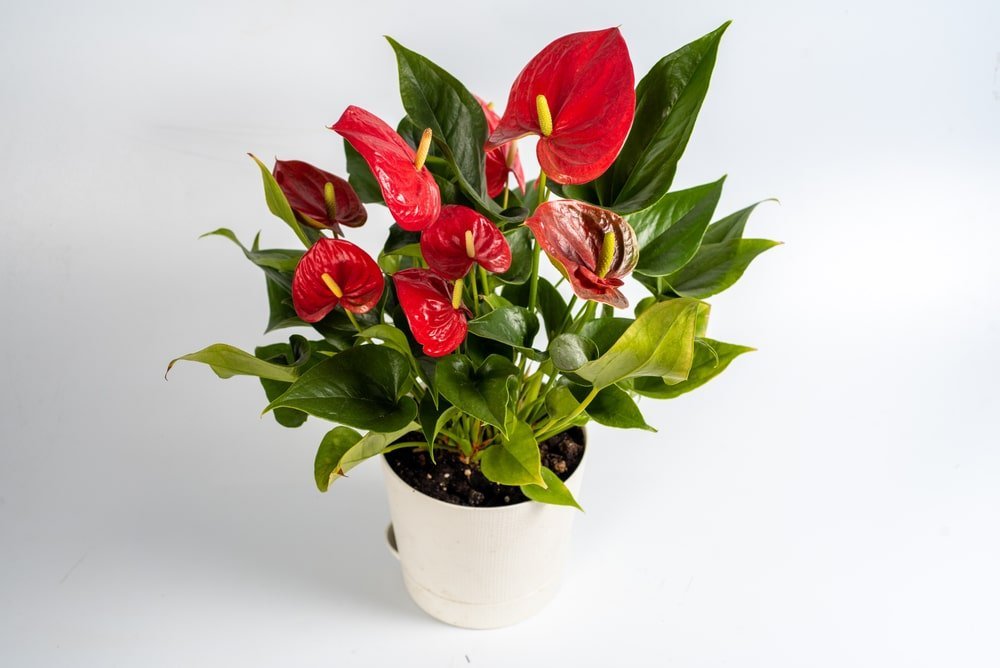
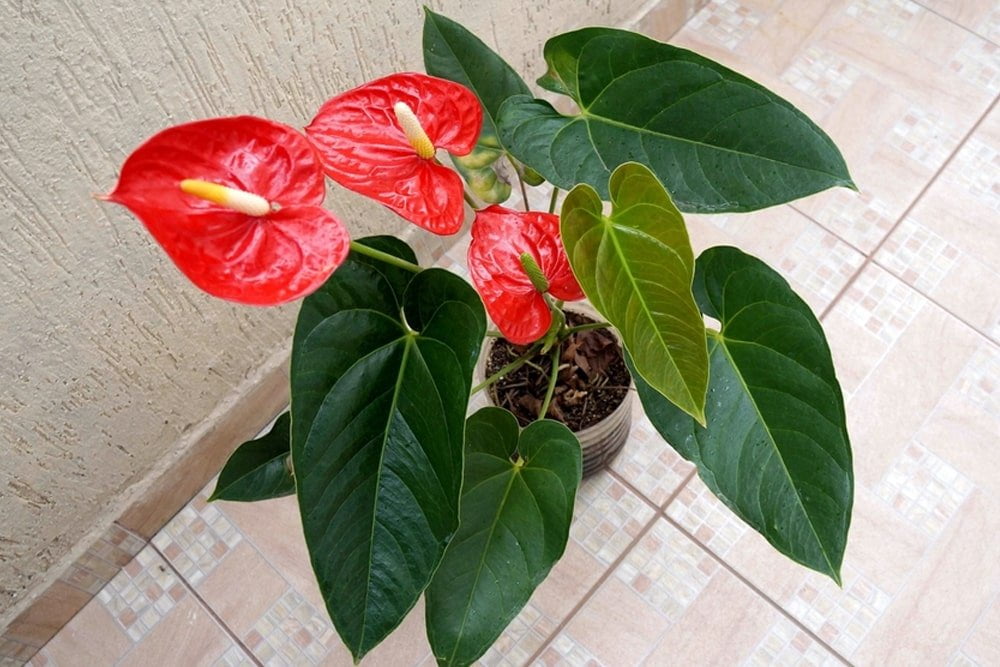


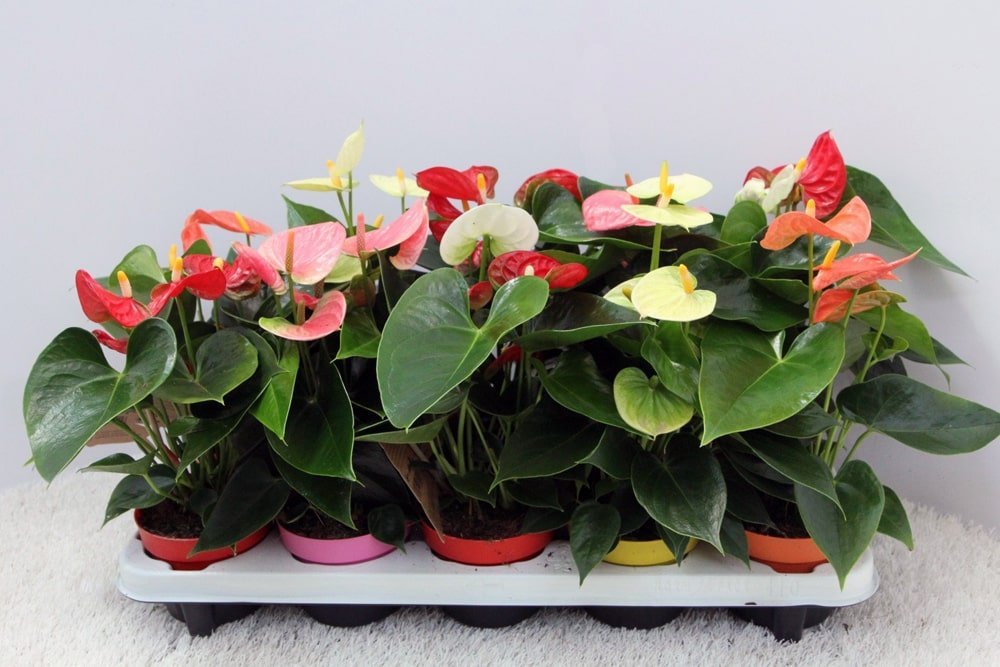



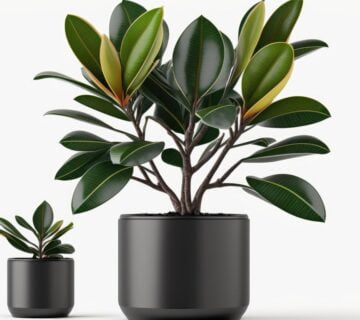
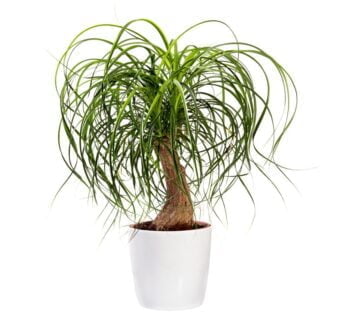
No comment